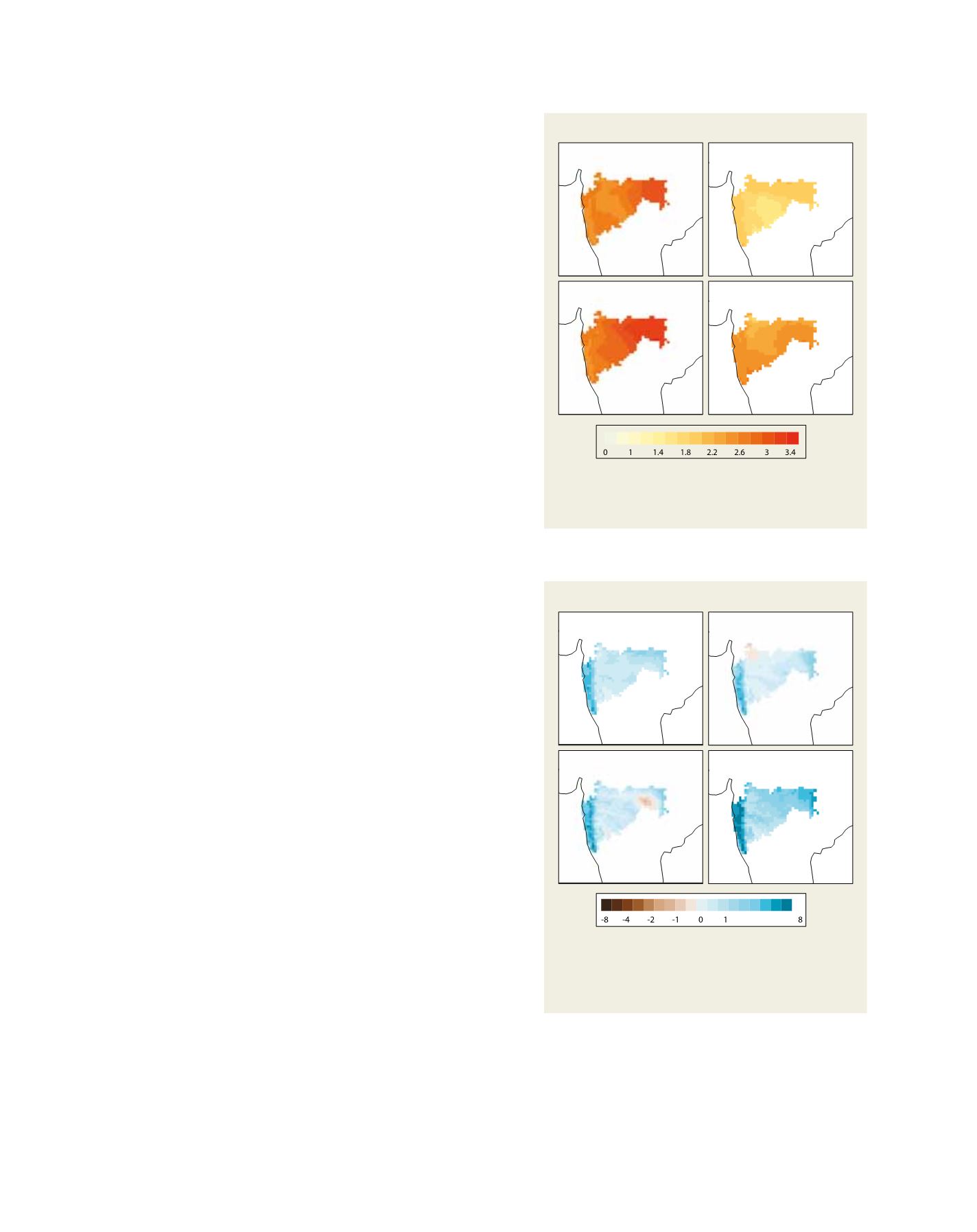

observational datasets covering the Maharashtra region,
with particular emphasis on the monsoon season. This
information guides the interpretation and application
of the projections.
[
] 251
C
apacity
D
evelopment
The climate change threat to Maharashtra
The World Bank notes that “In the state of Maharashtra, a single
drought (2003) and flood (2005) absorbed more of the budget
than the entire planned expenditure on irrigation, agriculture and
rural development from 2002–2007. Climate change is expected to
increase the frequency of extreme events.”
1
Covering an area of almost 308,000 square kilometres, Maharashtra
is India’s third-largest state and is home to the commercial hub of
Mumbai. Its population of almost 97 million is the country’s second-
largest. Yet despite extensive industrialization, the majority of its
population (64 per cent) works in agriculture and some 47 per cent
are living below the poverty line. The state’s high dependency on
the land, combined with a vulnerable 840 km coastline, leaves it
particularly susceptible to changing weather patterns. Key climate
changes and possible impacts include:
• Increased temperatures and altered seasonal precipitation
patterns affecting hydrological systems and agricultural
productivity
• Increased risk of severe weather events having a devastating
effect on agriculture, water resources, forestry and the wellbeing
of the population
• Coastal communities facing a serious threat from rising sea
levels – a 1 metre rise would put more than 1.3 million people
at risk.
The associated costs of climate change-related damages in Mumbai
alone could exceed US$30 billion if no action is taken.
Project strategy and key objectives
“Allowing for a range of plausible changes in local climate, rather
than using a single projection, when assesing impacts of climate
change leads to more robust development planning and policymak-
ing,” says Dr Bhaski Bhaskaran, Climate Services Manager of the Met
Office Hadley Centre.
In 2011, working in close collaboration with The Energy and
Resources Institute (TERI) of India and key funding partner the
Government of Maharashtra, the Met Office began a project called
‘Assessing climate change vulnerabilities and adaptation strategies
for Maharashtra’. It aims to:
• Establish how climate change may affect the state
• Alleviate impact on the economy, society and people’s lives
• Share lessons learned with other similar initiatives worldwide.
The strategy focuses primarily on water resources, agriculture,
coastal areas and livelihoods. Starting with a review of second-
ary data and relevant past work, it involves collating best possible
regional climate change information from a range of projections at
25 km spatial grid, a first for the region.
Four future climate projections which characterised the range of
a larger ensemble of Met Office climate models were selected for
use. Met Office partners then analysed datasets covering the 2030s,
2050s and 2070s using various methodologies developed by TERI
to identify impacts and vulnerability and to inform policy and deci-
sion-making.
Key roles
Each of the three project partners has a key role to play. The Met
Office Hadley Centre focuses on model validation and climate
changes. Validation compares the results for key climate variables to
Source: Met Office (UK)
Each of the four models used (A, B, C and D) projected
temperature increases of between 1.5° C and 3° C for the
Maharashtra region during the monsoon season
A
C
B
D
Source: Met Office (UK)
All four model projections suggest an increase in monsoon
rainfall, particularly along Maharashtra’s coastlines and
the Western Ghats, with only slight decreases in rainfall
seen further inland in projections B and C
2 4
A
C
B
D
Projections for 2070–2099: temperature
Projections for 2070–2099: rainfall
















